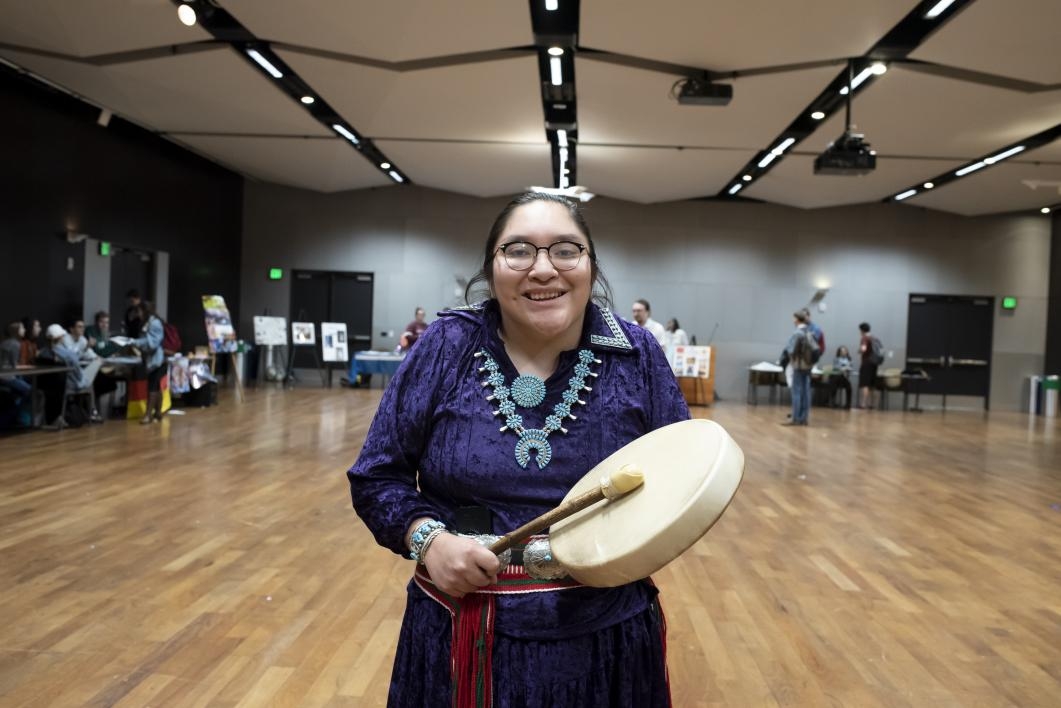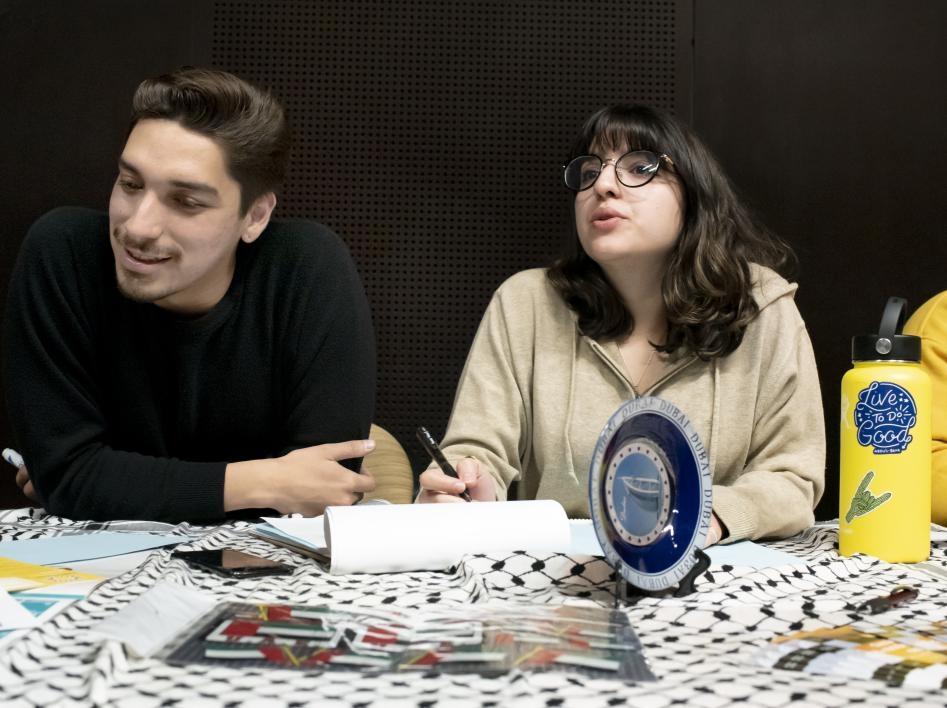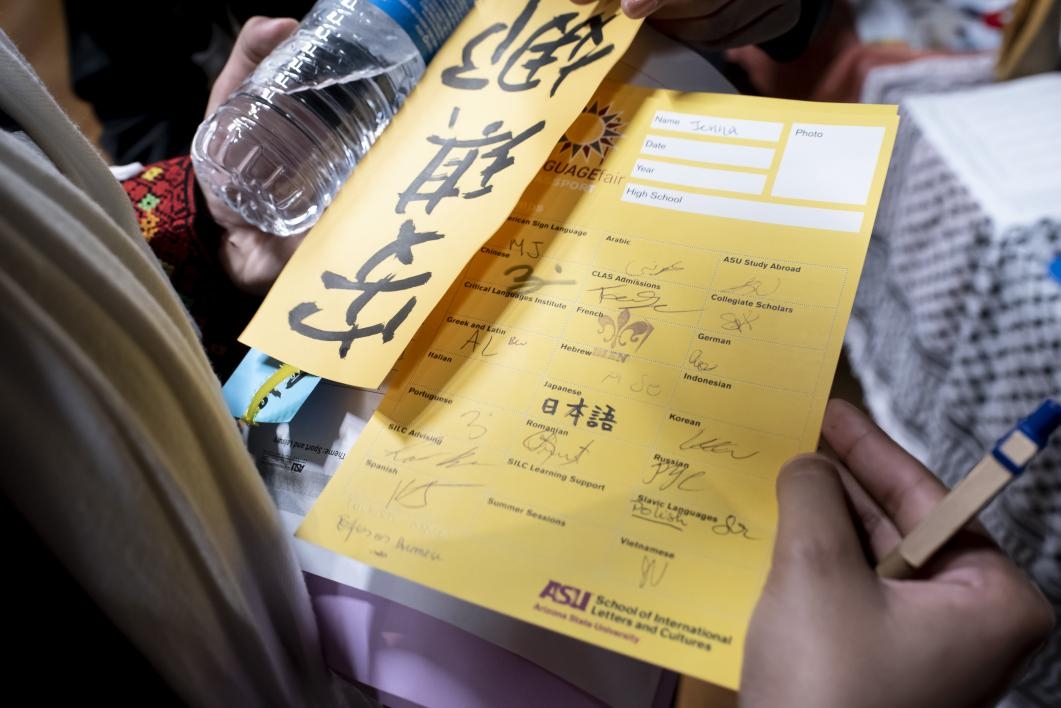Arizona high-schoolers delve into new cultures at ASU Language Fair

Students from the Learning Foundation and Performing Arts school in Gilbert perform a traditional Peruvian folk dance called valicha at the Memorial Union on the Tempe campus during the School of International Letters and Cultures' annual Language Fair.
Whether used to decipher an ancient culture or connect with the people around us, language is a cornerstone of societies around the world. This week, the breadth of that impact was showcased at Arizona State University’s annual Language Fair.
Now over two decades old, the exhibit gathers some 2,300 students from high schools around the state for an inside look at the School of International Letters and Cultures in The College of Liberal Arts and Sciences.
“This is the largest language fair for high school students in the Southwest and one of the largest outreach events at ASU,” said Nina Berman, a professor and the school’s director. “We are very proud to host it.”
A diverse lineup of graduate and undergraduate programs offer ASU students courses in more than 20 languages in any given year. With a lively schedule of mini-lessons, language competitions, informational tables and cultural performances, the event provides a platform to bring younger students into the fold.
As the world becomes more connected, being able to communicate in international contexts is increasingly important. But Enrico Minardi, an Italian and French lecturer at ASU who helped organize the event this year alongside Arabic instructor Umar Sulayman, said foreign language studies are often not made a priority in public education spheres in the United States. Initiatives like the Language Fair help bridge the gap for students looking to continue studying a language after high school, or discover a new one.
“We want to raise young students’ interest in foreign languages,” he said. “Moreover, it has already been shown that more and more employers look for candidates with these skills.”
It is through that interdisciplinary lens that Evanna Rouhani, a sophomore at The College’s School of Politics and Global Studies, chose to enroll in Arabic courses at ASU. Working as a volunteer at Language Fair, she met younger students hoping to leverage the same opportunities.
“I would like to go into immigration and asylum law, so learning Arabic really helps me communicate with people and connect with their culture,” she said. “I talked to a high school student who was looking to learn Arabic for the same reasons, and it was really cool seeing how excited they are about learning languages.”
Students put their own talents on display in cultural performances spanning traditional dances, foreign language plays and pop songs interpreted in American Sign Language. For Carla Whitehead, a Spanish teacher at Tempe’s McClintock High School, the event was a chance to expose her students to new opportunities. But as a teacher whose classroom includes students learning English as a second language, she said it was also an opportunity to show them the value of their native languages.
“We have a lot of Spanish speakers who like seeing that their language is not just a requirement for high school graduation, but in fact something other people are trying to master,” she said.
More Arts, humanities and education

ASU professor's project helps students learn complex topics
One of Arizona State University’s top professors is using her signature research project to improve how college students learn…

Award-winning playwright shares her scriptwriting process with ASU students
Actions speak louder than words. That’s why award-winning playwright Y York is workshopping her latest play, "Becoming…

Exceeding great expectations in downtown Mesa
Anyone visiting downtown Mesa over the past couple of years has a lot to rave about: The bevy of restaurants, unique local shops…





